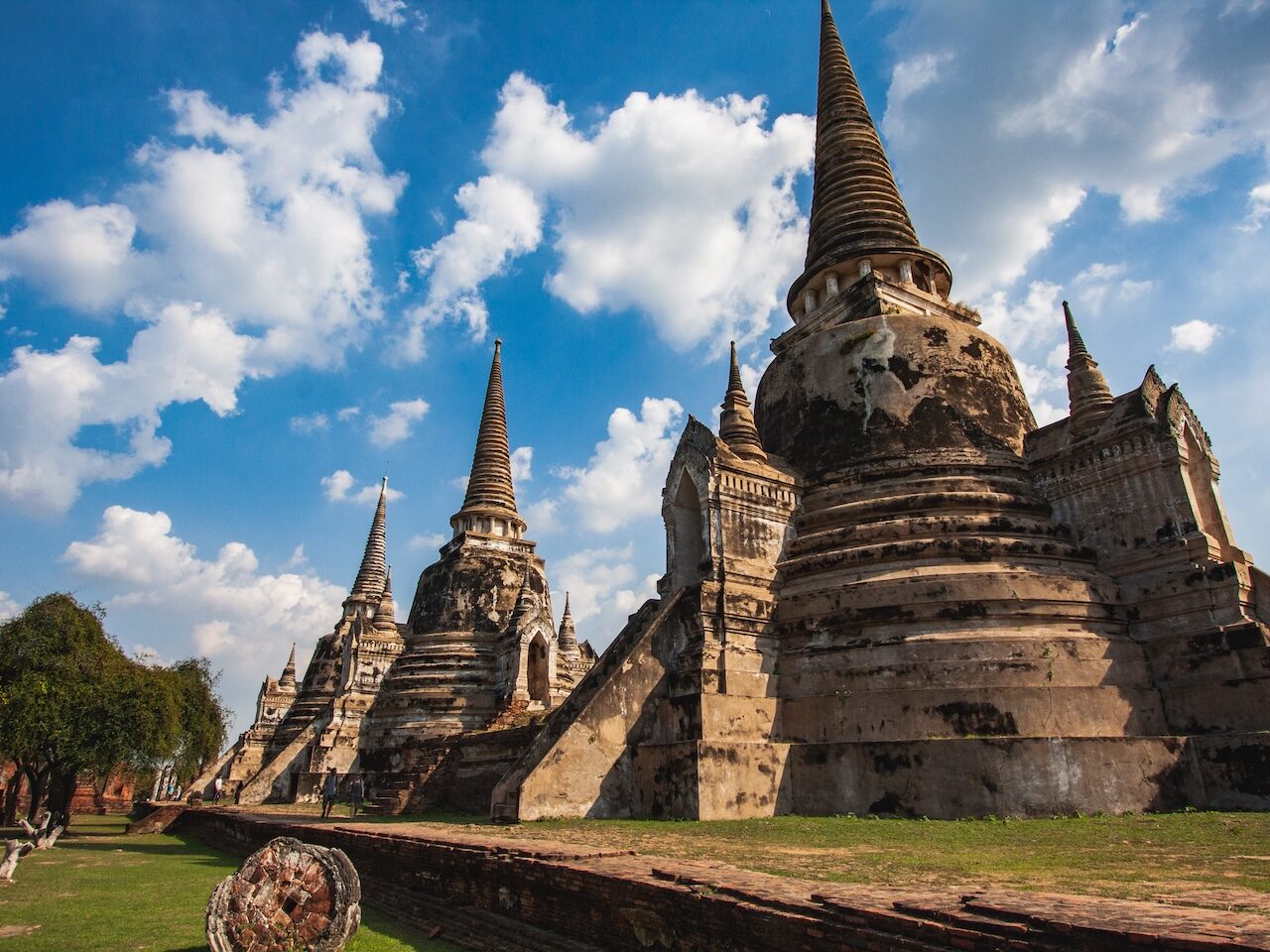Thailand is one of my favorite places on earth – full of flavor, scent, and sunshine. If you’re dreaming of an Asian adventure, this Thailand travel guide will walk you through it step by step.
I’ve gathered everything I wish I’d known before my first trip – plus a few lessons I only picked up along the way.
You’ll learn when to go, how to get there, where to stay, and what it all costs. I’m also sharing a ready-to-use 3-week itinerary and a list of must-see spots – without fluffy descriptions or tourist traps.
Ready for practical tips, real inspiration, and advice that actually helps? Let’s do this.
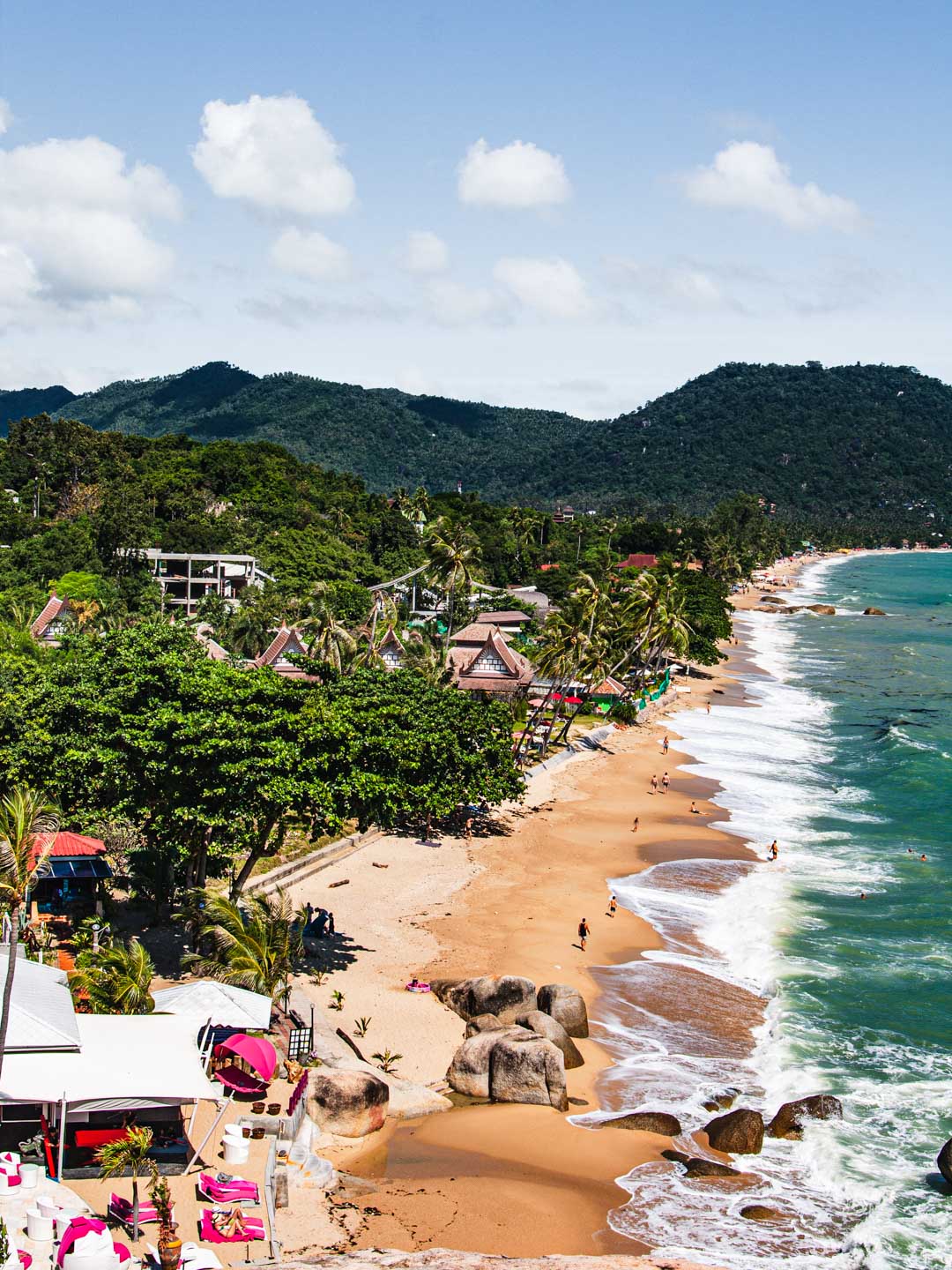
Love comprehensive travel planning? Don’t miss my Ultimate Travel Guide to Koh Samui for detailed island insights!
Best Time to Visit Thailand
Climate of Thailand
Thailand’s climate is tropical and humid, shaped by the monsoon, which means you’ll run into different weather depending on when and where you go.
Seasons in Thailand
Thailand experiences three distinct seasons:
- Cool and dry: November to March (still warm)
- Hot and dry: April to June
- Hot and humid: July to October
Best Time to Visit
The dry season, or “winter” as locals call it, attracts the highest number of tourists.
Even though prices are a bit higher during this time, the weather is perfect for both Americans and Europeans, with little rain and mild temperatures.
Least Favorable Time to Visit
The hot and humid season is the least favorable for travel.
During this time, Thailand endures extreme heat (especially in April and May) and heavy rainfall, which can cause flooding.
However, this season offers more affordable accommodation due to fewer tourists.
Best Time to Visit Different Regions
The optimal time to visit varies by region:
- Northern Thailand: Including Chiang Mai and Mae Hong Son, as well as central areas like Bangkok, is best from November to March.
- Southern Thailand (Malay Peninsula):
- Koh Samui: Ideal between December and August.
- Phuket: Best between October and April.
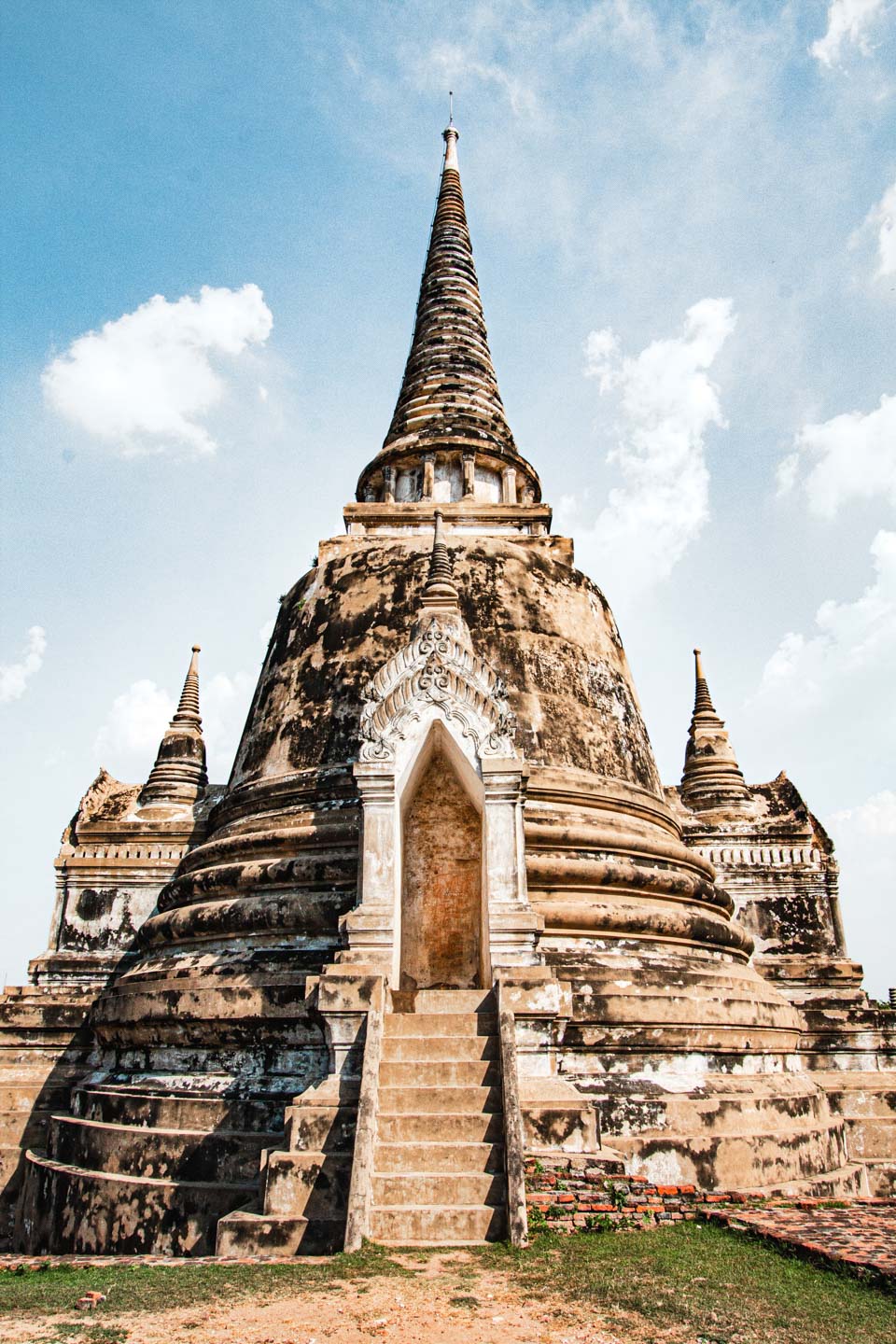
How to Get to Thailand
Direct Flights from Europe
You can find direct flights to Bangkok from several major European cities, including Paris, London, Copenhagen, Frankfurt, Munich, Zurich, Vienna, Brussels, Amsterdam, Stockholm, and Oslo.
These flights typically have an average duration of about 12 hours.
Flights from the USA
Currently, there are no direct flights from the USA to Thailand.
You will need to book flights with a layover in a European or Asian hub, such as Hong Kong, Seoul, Singapore, or Shanghai.
The average flight time from the USA is around 20 hours, depending on whether you’re departing from the East or West Coast.
Flight Costs
A round-trip direct flight from London to Bangkok generally costs around 900 EUR per person.
For flights from Los Angeles to Bangkok, prices usually start at approximately 800 USD per person for a round trip.
Best Time to Travel
The best times to find cheaper flights are during the low season, which spans May-June and September-October. To get the best deals, consider booking your flights well in advance or searching for last-minute offers.
Additionally, flights during less busy times or midweek (Tuesday, Wednesday) often come with lower fares.
Tips for Booking
For extra savings, take advantage of loyalty programs like Miles & More.
I personally recommend booking through skyscanner.com or kiwi.com for a range of options and competitive prices.
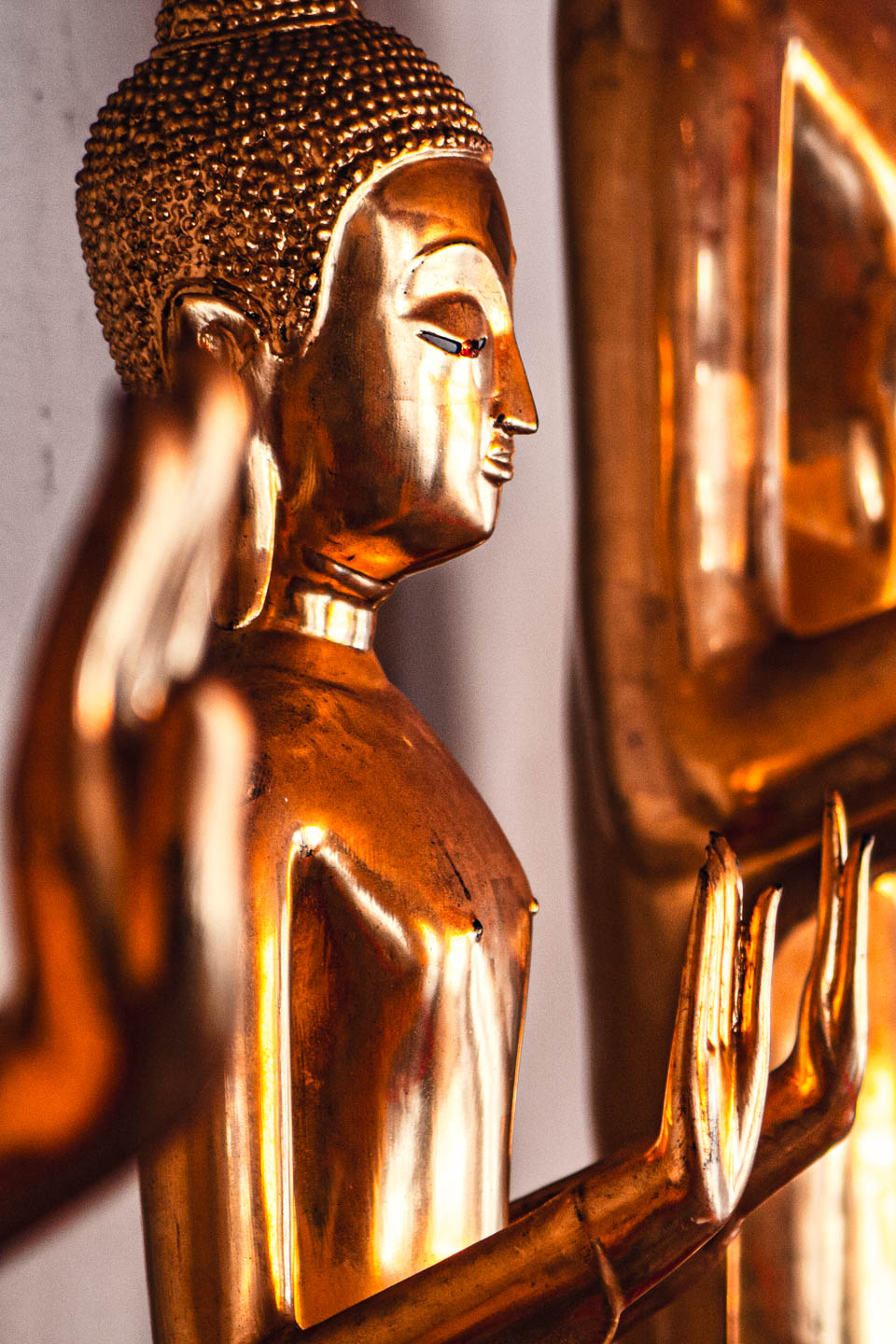
Currency
The currency in Thailand is the Thai baht (THB), which is divided into 100 satang.
How much is $1 US in Thailand?
At the time of writing, 1 Thai baht is approximately 0.027 euros and 0.031 USD. Conversely, 1 USD equals about 32.35 baht.
Can you use US dollars in Thailand?
In Thailand, US dollars are not widely accepted, so it’s best to use Thai baht for most transactions.
It’s a good idea to exchange a small amount of money at the airport upon arrival to cover your initial expenses. For larger amounts, you can exchange your money at local banks.
Can I use my debit card in Thailand?
You can use your debit card in Thailand, especially in major cities and tourist areas, but many small vendors only accept cash.
Note that ATM withdrawals often come with extra fees for foreigners, and not all places may accept credit or debit cards.
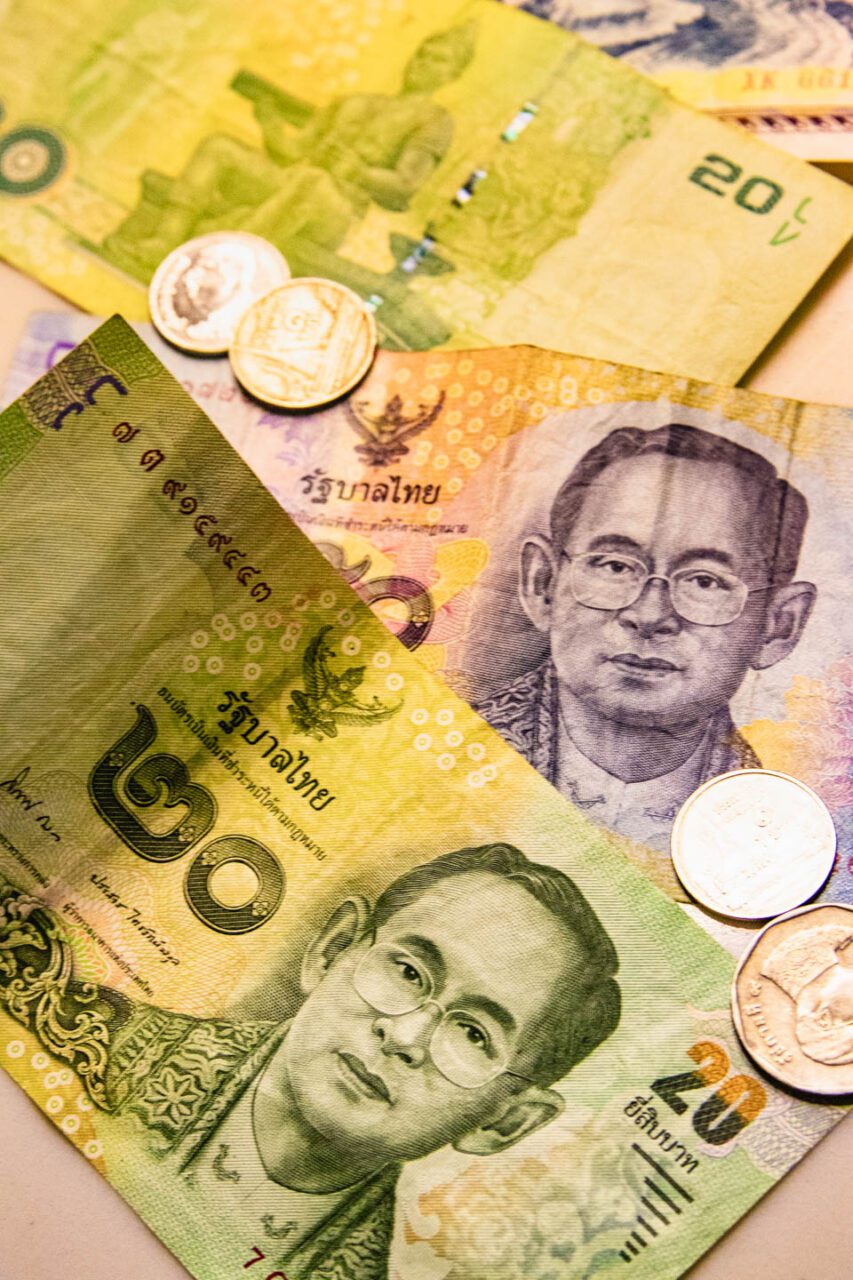
Visa
Does a US citizen need a visa for Thailand?
Starting July 15, 2024, nationals from 93 countries and territories, including the USA and most European countries, can enter Thailand without a visa.
This applies to tourism or short business trips of up to 60 days.
You can extend your stay for an additional 30 days at a Thai Immigration Bureau, allowing for a total of 90 days.
Long-Term Stay Visa
If you intend to stay for more than 90 days, you can apply for a new type of visa (such as a work visa) directly in Thailand before your 90-day visa-free period expires.
Entry Requirements
Upon entering Thailand, you must present:
- A passport valid for at least 6 months from the date of entry
- A return ticket
- Financial means for your stay
How much money do you need to enter Thailand?
You need to show proof of around 10,000 THB (300 USD) per person or 20,000 THB (600 USD) per family to enter Thailand.
Additional Requirements
Failure to meet these conditions may result in refusal of entry. Additional documents that may be required include:
- Travel itinerary
- Hotel reservation confirmation
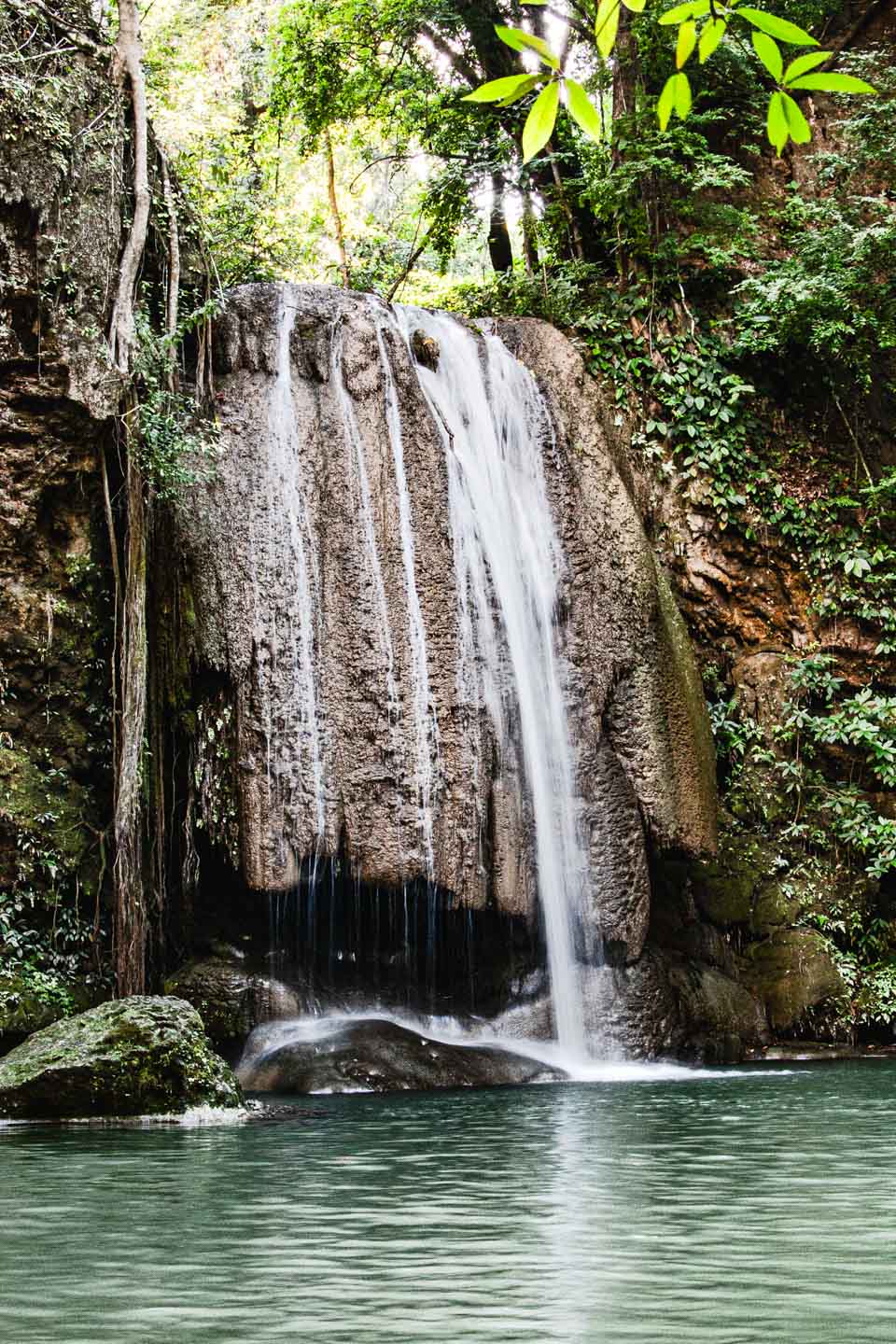
Vaccinations
What vaccines do I need to go to Thailand?
Fortunately, no mandatory vaccinations are required before traveling to Thailand.
Recommended Vaccinations
However, it’s a good idea to consider vaccinations several weeks before your trip to ensure your health.
Consult with a travel clinic doctor before your journey, who may recommend vaccinations against:
- Japanese encephalitis
- Hepatitis A and B
- Diphtheria
- Tetanus
- Polio
- Rabies
Vaccination Costs
Keep in mind that vaccination costs can vary depending on where they are administered and may represent a significant expense.
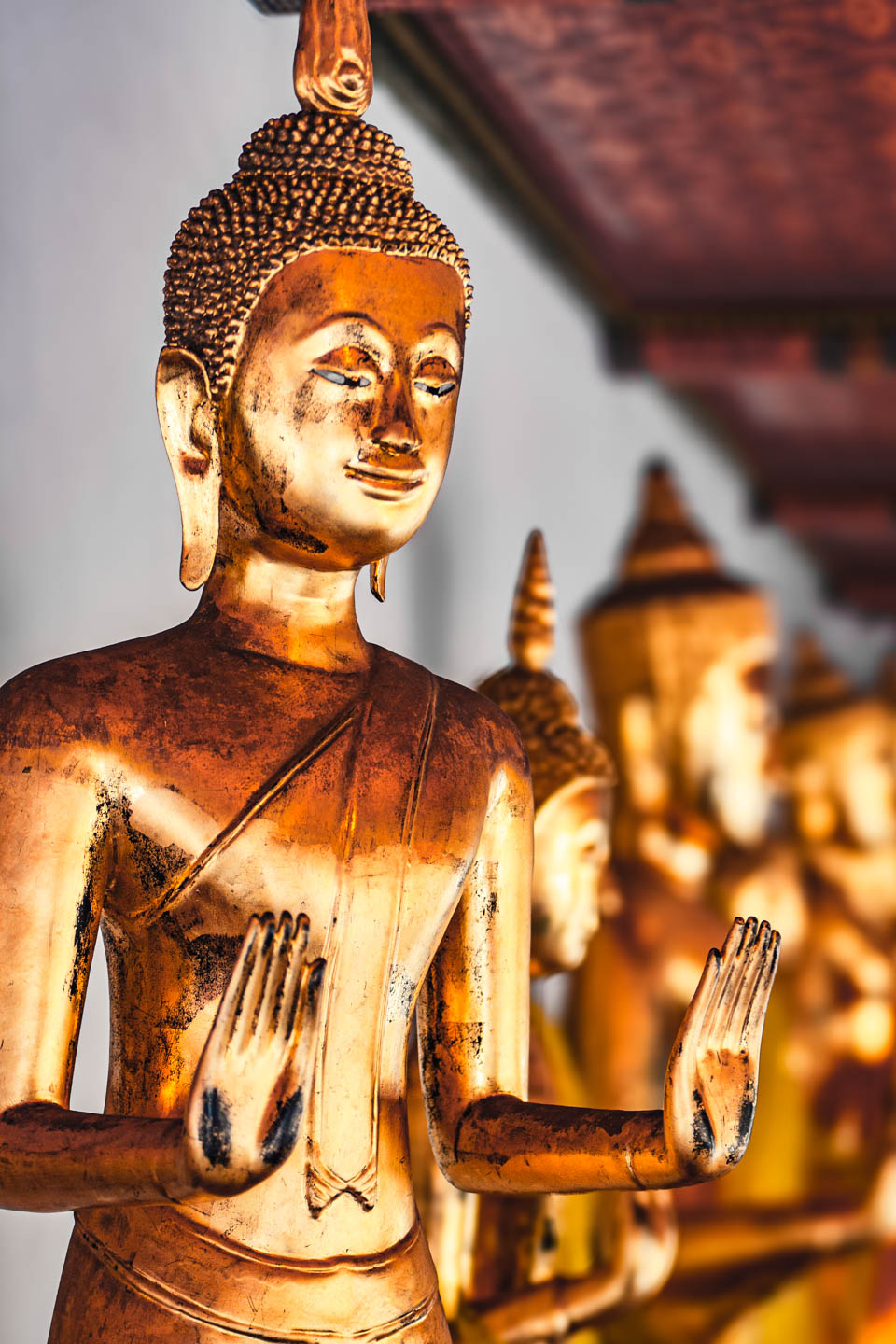
Malaria
Risk of Malaria in Thailand
Contrary to common belief, the risk of contracting malaria in Thailand is relatively low, though it does depend on the areas you visit.
Traveling to Less Frequented Areas
If you plan to travel to less frequented regions of the country, it’s advisable to consult a doctor for recommendations on antimalarial medications.
Traveling to Popular Tourist Spots
For visits to popular tourist destinations such as Bangkok, Chiang Mai, or Krabi, you can generally manage the risk by using strong insect repellents.
Recommended Preparations and Protective Measures
Consider using MUGGA with 50% DEET, available online. Additionally, follow these simple guidelines to protect yourself:
- Wear long clothing
- Spray rooms with mosquito repellent
- Sleep under a mosquito net
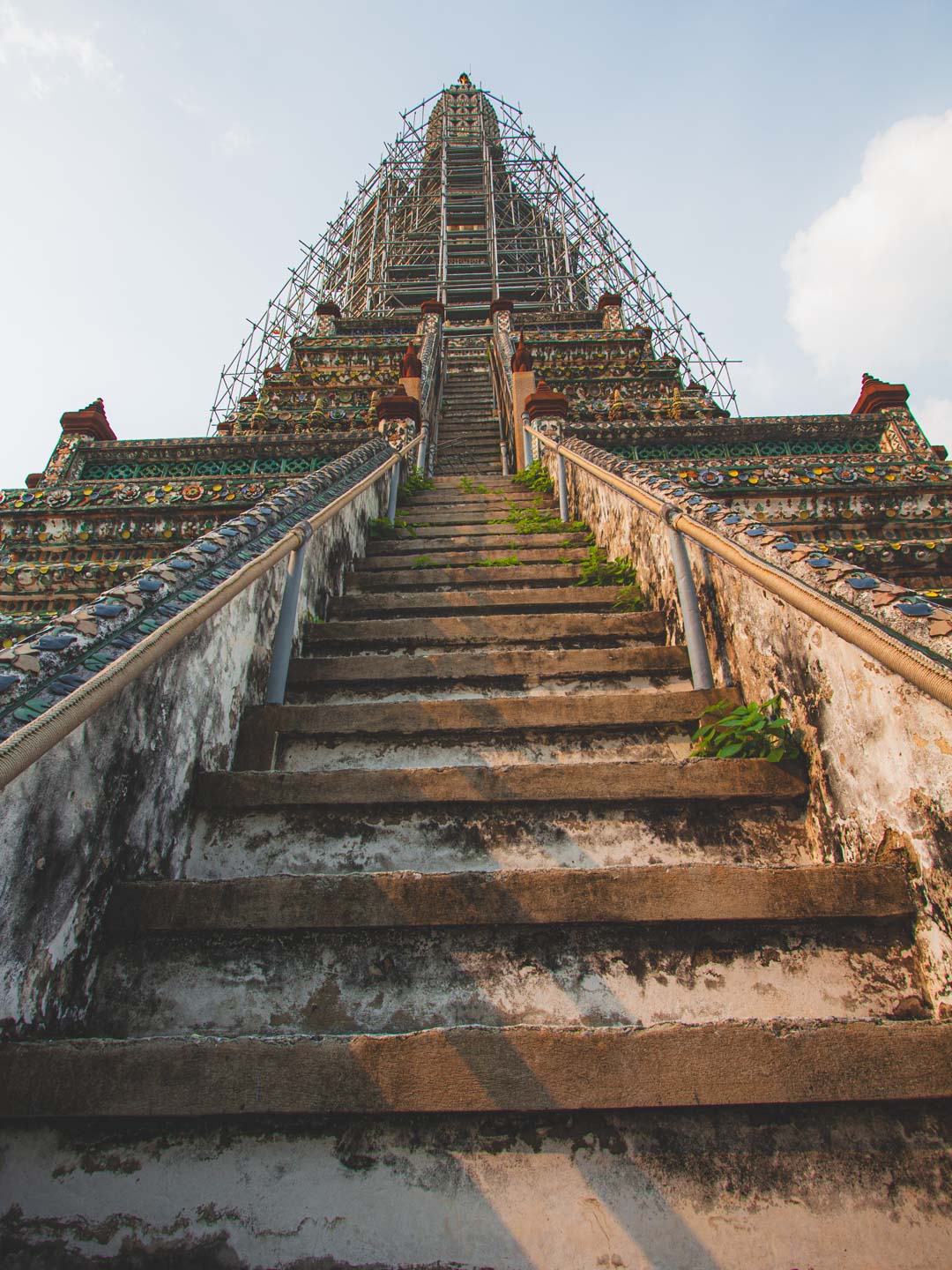
Where to Stay in Thailand
Thailand offers a diverse range of accommodation options, making it an appealing destination for all types of travelers. Here’s a look at what you can choose from:
Budget Hostels
Solo travelers will find budget hostels perfect for their needs, with prices typically ranging from 800-1000 THB per night.
Guesthouses and Inns
Family-run guesthouses, also known as “guesthouses“, provide various standards and amenities, such as breakfast, air conditioning, and private bathrooms. Prices for these range from 1200 to 3500 THB per night.
Hotels and Resorts
Thailand has mid-range hotels priced around 2500-3500 THB per night, while luxury resorts, especially on the Thai islands, can cost between 7000-10000 THB per night.
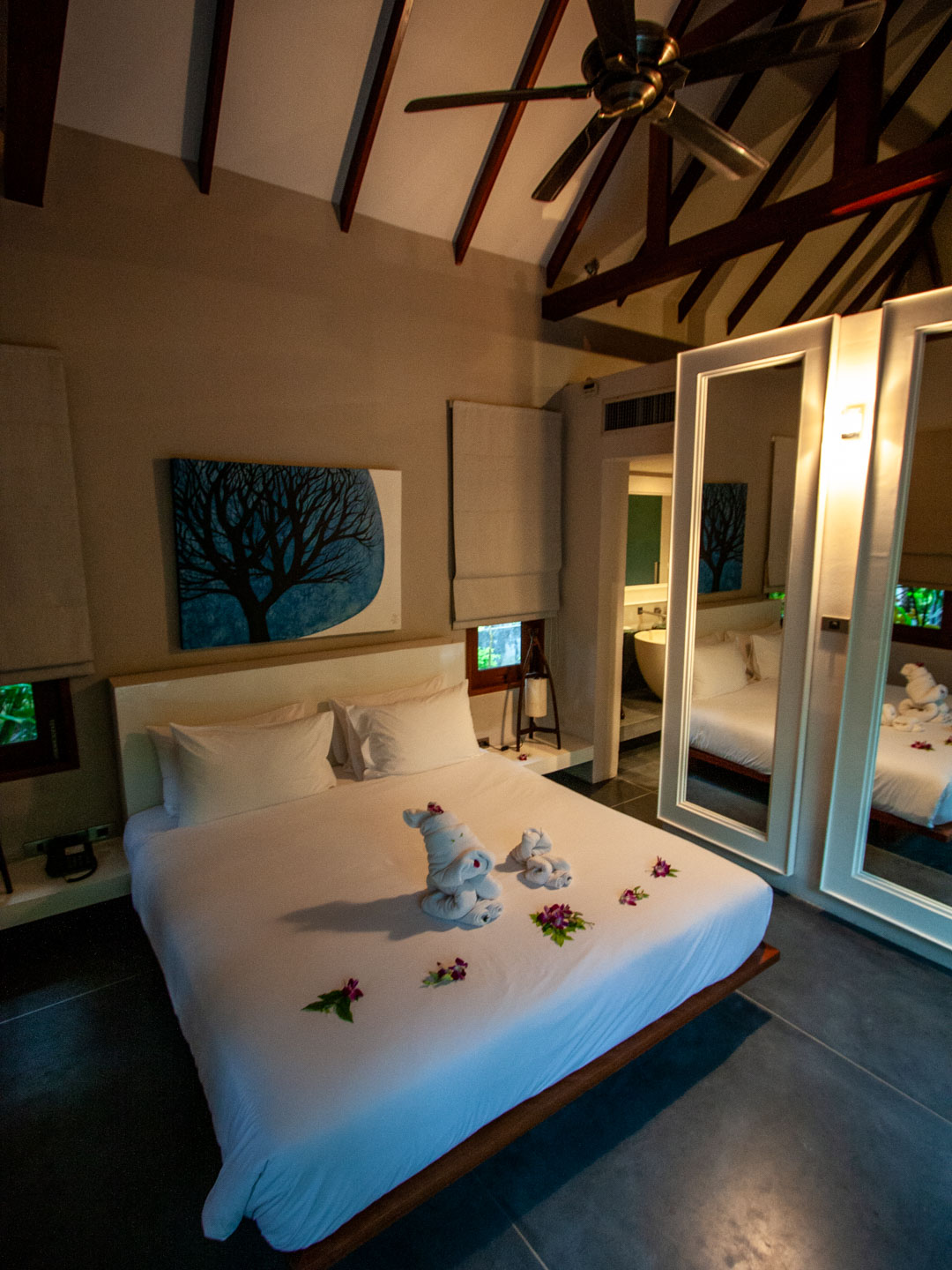
Options for a Limited Budget
If you’re traveling on a tight budget, consider staying at B&Bs or using couchsurfing. Couchsurfing is a great way to experience authentic Thai culture and save on accommodation costs.
Booking Accommodation
While many travelers opt to book accommodation on arrival, booking in advance (e.g., through booking.com) with options like free breakfast and free cancellation can be beneficial.
This method saves time during a busy itinerary but offers less flexibility for changes. It works especially well for shorter trips (under 30 days).
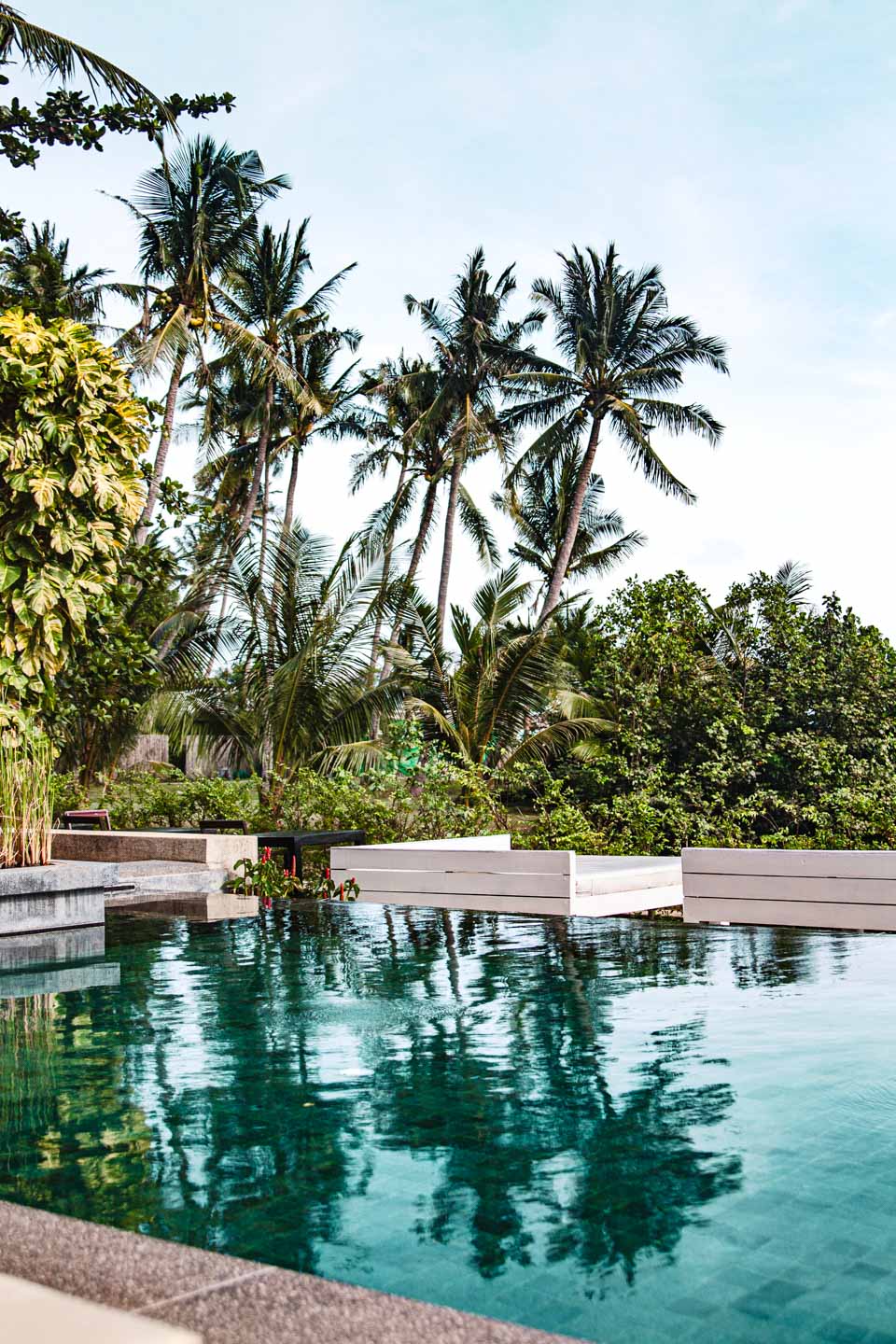
Where to Eat in Thailand
Thai cuisine is a major reason I fell in love with Thailand. It’s available everywhere, often at prices that will delight any traveler.
Cost of Food
Expect to spend about 800-1000 THB per day for food, depending on where you choose to eat.
Dining Options
In Thailand, you’ll find a range of dining options:
Street Food Stalls
Explore countless street food stalls, which offer authentic Thai dishes and other local specialties at very low prices.
Note that eating at these stalls often means dining while squatting on the ground, not sitting at a table. Prices typically range from 50 to 150 THB per dish.
Local Restaurants
Alternatively, local restaurants provide a more comfortable dining experience and serve delicious, more refined dishes.
Prices at these restaurants start from 150 THB and can go up to 400 THB per dish.
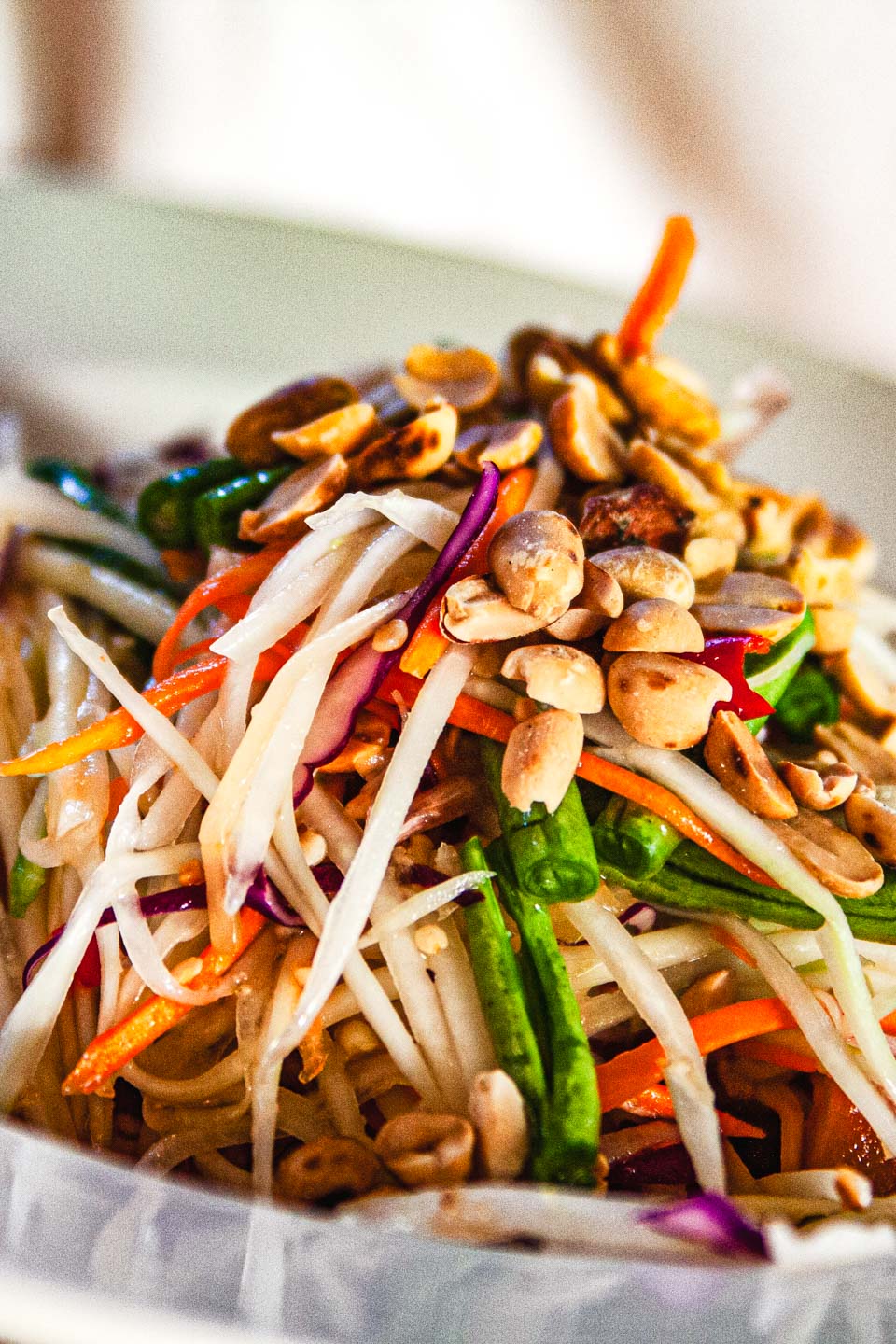
Practical Tips
Explore Different Dining Options
Try out various dining options to find what suits you best.
While eating in “street” conditions might not be everyone’s preference, stepping out of your comfort zone to experience authentic street food, especially in Bangkok, can be a rewarding adventure.
This reminds me of my first street food experience in Bangkok – check out my Best Chiang Mai Cooking Class guide for hands-on Thai cooking tips!
Follow Basic Hygiene Practices
When eating out, make sure to:
- Sanitize your hands: Use hand sanitizer before every meal (travel-sized antibacterial gels are convenient).
- Avoid ice cubes: Skip the ice cubes in your drinks.
- Be cautious with meat: Avoid buying meat from street vendors.
- Wash your fruit: Rinse fruit with bottled water before eating.
- Choose freshly prepared food: Opt for food that’s made right in front of you.
- Dine where locals go: Street food stalls often serve better food than expensive restaurants.
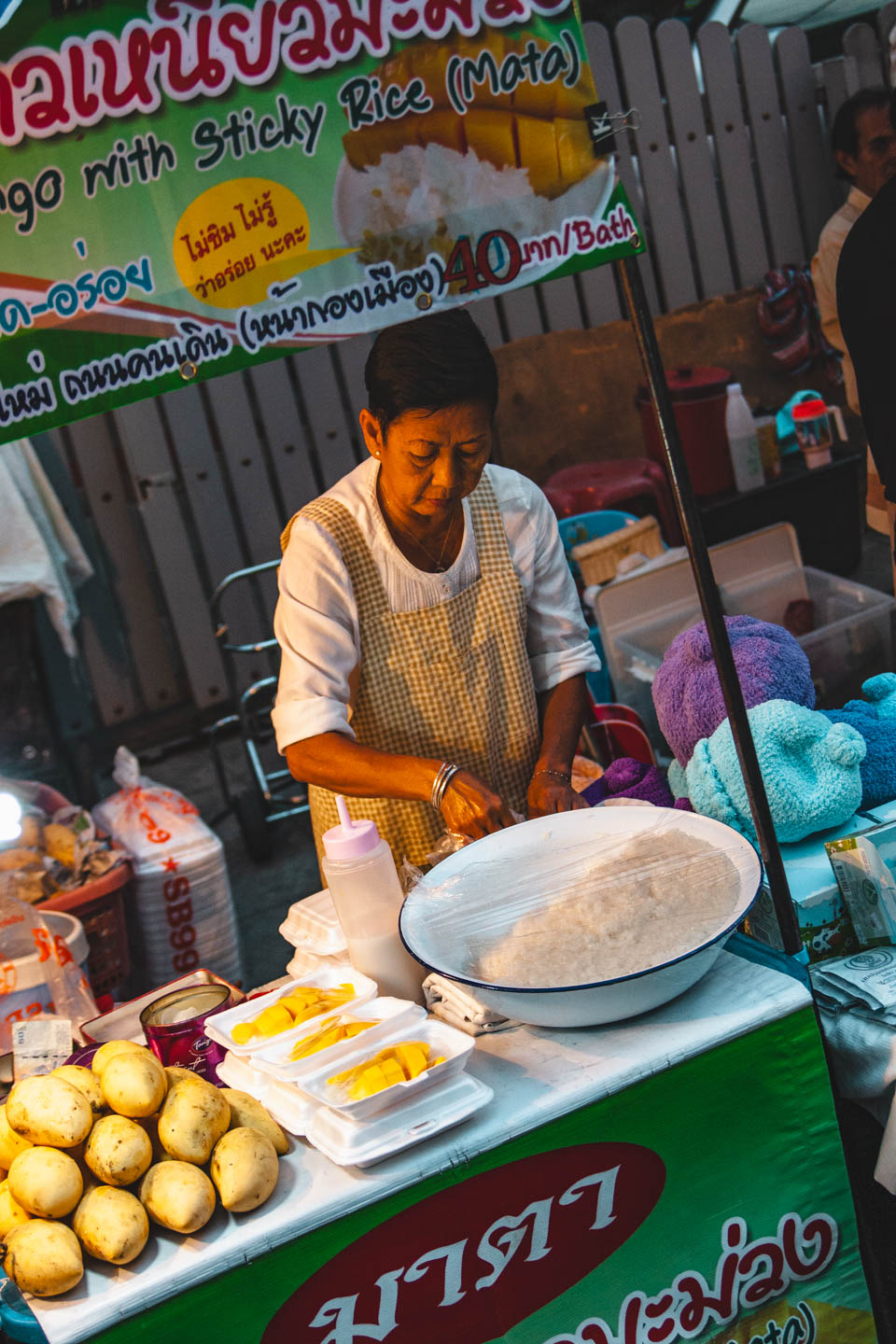
Travel Insurance
Although travel insurance isn’t legally required for visiting Thailand, it’s strongly recommended.
Insurance Coverage
Make sure your insurance covers high medical expenses and check for any policy exclusions.
For example, activities like diving might be considered extreme sports and may require additional coverage.
Choosing Insurance
Insurance prices depend on factors such as age, health, and planned activities.
Use comparison tools like EKTA, INSU BUY, or Visitors Coverage to find the best plan tailored to your needs.
Insurance Costs
A basic insurance plan for a trip to Thailand typically costs around 200 USD.
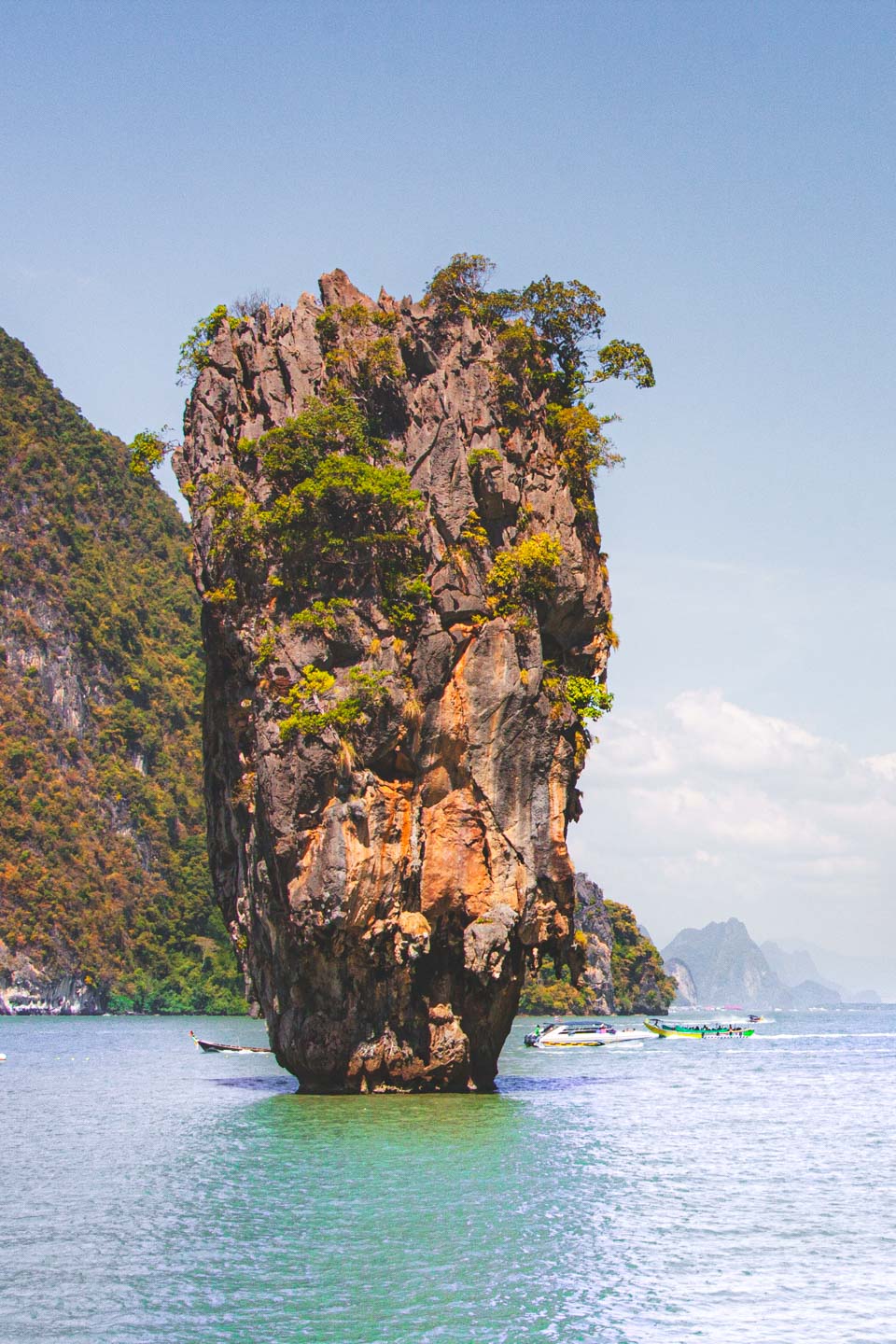
How to Get Around
Tuk-Tuks
One of the most popular and convenient ways to get around Thai cities is by hiring a tuk-tuk.
This three-wheeled vehicle can theoretically hold up to three passengers, but in practice, it often accommodates more. Tuk-tuks operate like taxis but sometimes follow fixed routes.
When hiring a tuk-tuk, it’s important to negotiate the price before you get in and stick to it. The typical fare should be around 50-60 THB per kilometer.
Scooters
Scooters are another great option, often available with a driver for about 30-40 THB per kilometer.
They’re perfect for quickly navigating through busy city streets and are ideal for short distances, helping you avoid traffic congestion.
Songthaews
Songthaews are larger, modified pick-up trucks or vans used for public transport.
Fares typically start at 30-40 THB for short trips and can go up to 80-100 THB or more for longer journeys, depending on the distance and location.
Songthaews offer a practical alternative between tuk-tuks and taxis, especially for longer city trips.
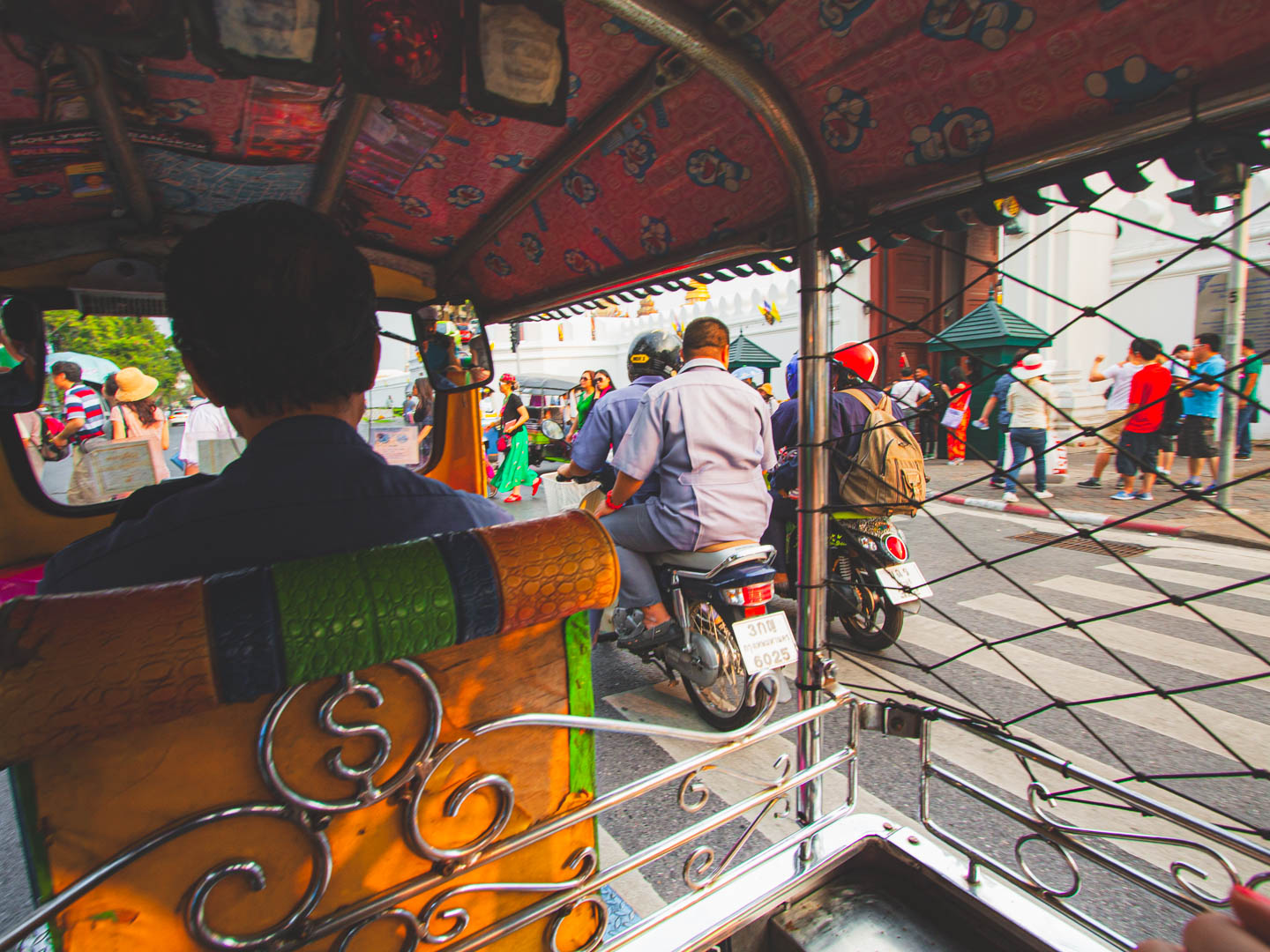
Domestic Flights
Flying is the quickest way to travel within Thailand, though it is generally more expensive.
Most flights are operated from Bangkok, connecting to destinations like Chiang Mai, Koh Samui, and Krabi at competitive prices.
Flight prices:
- Bangkok to Chiang Mai: 1000 to 2500 THB
- Bangkok to Phuket: 1200 to 3000 THB
- Bangkok to Koh Samui: 2500 to 5000 THB
Government Buses
Government buses offer a budget–friendly travel option, though they might not be as comfortable as tourist minivans. You can purchase tickets directly at bus terminals, often referred to as “BKS stations.”
Bus prices:
- Bangkok to Chiang Mai: 500 to 800 THB
- Bangkok to Phuket: 600 to 1000 THB
Tourist Minivans
Minivans are a comfortable choice, featuring air-conditioning and often providing hotel pick-up services.
While they offer added convenience, they tend to be more expensive than government buses and may offer less interaction with locals.
Minivan prices:
- Typically 20-30% higher than government buses
Trains
Trains are ideal for medium to long-distance journeys, such as traveling from Bangkok to Ayutthaya or Chiang Mai.
Departure and Booking
Most long-distance trains leave from Krung Thep Aphiwat Central Terminal in Bangkok (formerly Bang Sue Grand Station).
Services include routes to Ayutthaya (1.5-2 hours) and Chiang Mai (11-12 hours, often overnight).
Tickets can be booked online, through travel agencies, or at train stations. For long-distance trips with sleeper cars, it’s best to book up to 90 days in advance.
Train Classes
- 3rd Class: Basic, no air-conditioning
- 2nd Class: More comfortable, often with air-conditioning
- 1st Class: Highest comfort, with private cabins available
Train Prices
Ticket prices vary based on class, air conditioning, and train type (Special Express, Express, Rapid, Ordinary).
Sample train prices:
- Bangkok to Ayutthaya: Approximately 300-400 THB (for an air-conditioned express)
- Bangkok to Chiang Mai: From 800 THB (seats) to 1500-2000 THB (sleeper car)
Keep in mind that air conditioning on trains is usually set at a cool temperature, so it’s a good idea to bring a light jacket or sweater.

Long-Tail Boats
Long-tail boats offer a unique and traditional way to get around, especially in Bangkok’s canals.
They also connect islands with the mainland and are popular for trips to floating markets. In Bangkok, short rides typically cost around 20-30 THB.
Speedboats
For a quicker ride, try speedboats. I used them for a day trip from Ao Nang to the Phi Phi Islands.
Prices vary based on the route and trip length, with a day trip to Phi Phi Islands generally costing between 1500 and 2500 THB.
Scooters
Renting a scooter is an excellent way to explore both villages and more remote areas. Daily rates range from 200 to 400 THB, depending on the scooter and location. Always remember to ask for a helmet for your safety.

Car Rentals
Renting a car in Thailand generally costs between 1000 and 1500 THB per day for a standard model. While an international driving permit is technically required, it is not always strictly enforced.
In Thailand, driving is on the left side of the road. The road quality varies, and signage can be minimal. Exercise caution, as aggressive driving and accidents are relatively common.
What to Avoid in Thailand
- Drink only bottled water to steer clear of stomach problems.
- Always wear a helmet when riding a scooter – traffic can be chaotic.
- Keep an eye on your belongings in crowded spots, especially in busy cities and popular beaches.
- Avoid riding elephants – stay away from attractions that mistreat these animals.
- Don’t criticize the royal family – Thailand has strict laws protecting the monarchy.
- Bargain at markets but be polite – negotiating is common, but should be done courteously.
- Watch out for tourist scams – be cautious of suspiciously cheap tours or fake guides.
Before you hop on an elephant, check out my post Rethink Your Plans: 10 Reasons to Avoid Elephant Rides in Thailand.
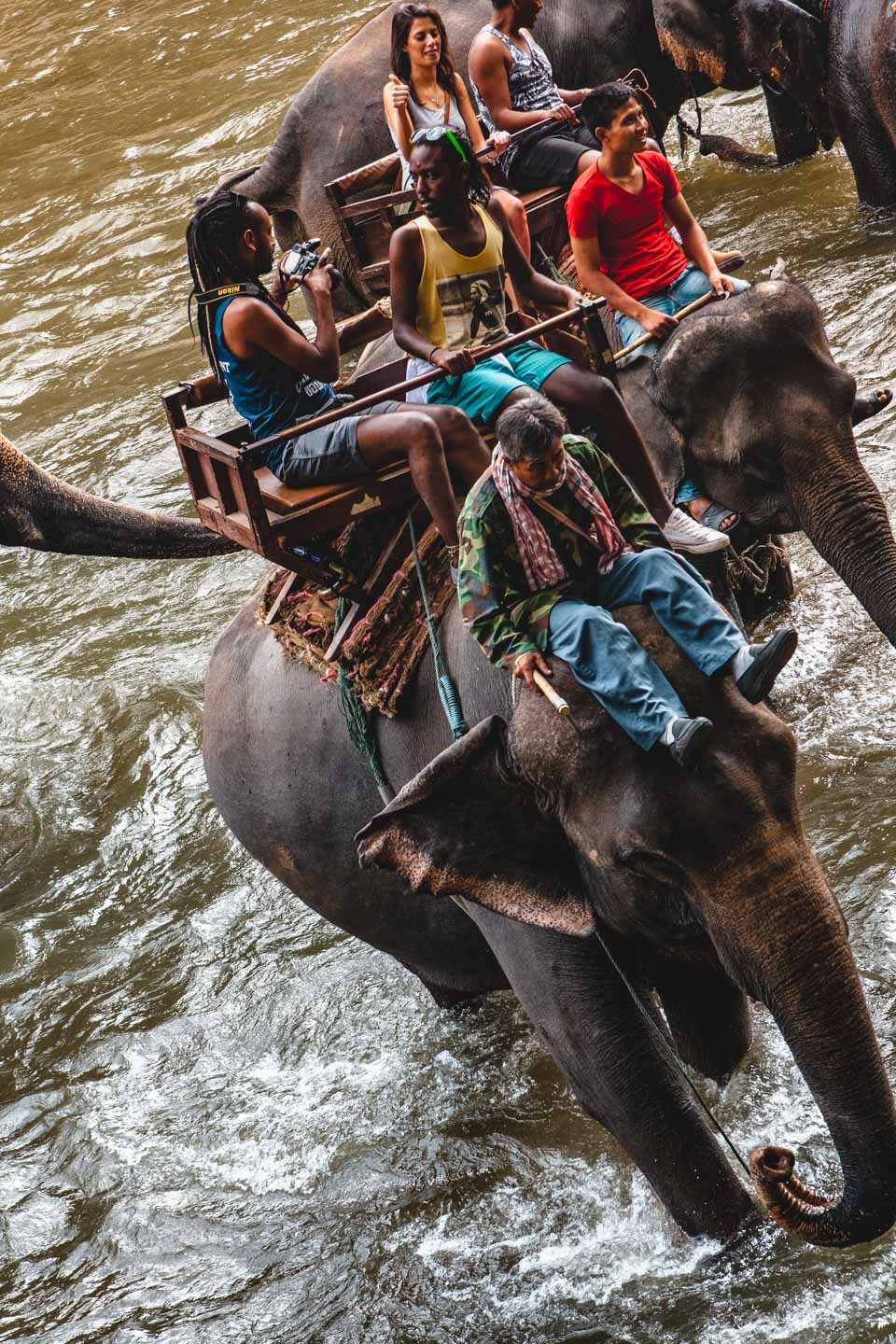
Best Paces to Visit in Thailand
Thailand boasts some of the most captivating attractions in the world.
Whether you’re into historical sites or beachside relaxation, you’ll find something to love. Here’s a guide to the top spots you shouldn’t miss:
- Bangkok: Thailand’s bustling capital and largest city, known for its vibrant diversity, mesmerizing Buddhist temples, world-class cuisine, and friendly locals.
- Ayutthaya: A historic province filled with ancient Buddhist temple ruins. The area is so rich in history that one visit may not be enough to explore all its treasures.
- Koh Samui: The country’s second-largest island, celebrated for its long sandy beaches, coconut palms, and beautiful coral reefs. It’s an ideal destination for unwinding and soaking up the sun.
For my detailed personal experience on this stunning island, check out my Koh Samui Travel Guide with insider recommendations!
- Koh Lipe: A tropical paradise near the Malaysian border, renowned for its soft white sandy beaches and excellent diving spots with vibrant coral reefs.
- Phi Phi Islands: A stunning group of six islands in the Andaman Sea, famous for their breathtaking landscapes and superb diving conditions, drawing visitors from around the world.
- Phang Nga National Park: A picturesque bay in southern Thailand, known for the island featured in James Bond films, offering dramatic scenery and memorable experiences.
- Khao Sok National Park: A scenic haven with ancient rainforests and impressive rock formations emerging from serene waters, perfect for nature lovers.
- Ao Nang: A popular resort town in southern Thailand and the main city of Krabi, famous for its beautiful beach and spectacular sunsets.
- Chiang Mai: The largest city in northern Thailand, brimming with temples, fantastic cuisine, elephant sanctuaries, and numerous cooking classes.
- Chiang Rai: Known for the unique “White Temple“, this town is an excellent starting point for river cruises on the Mekong and exploring the opium region.
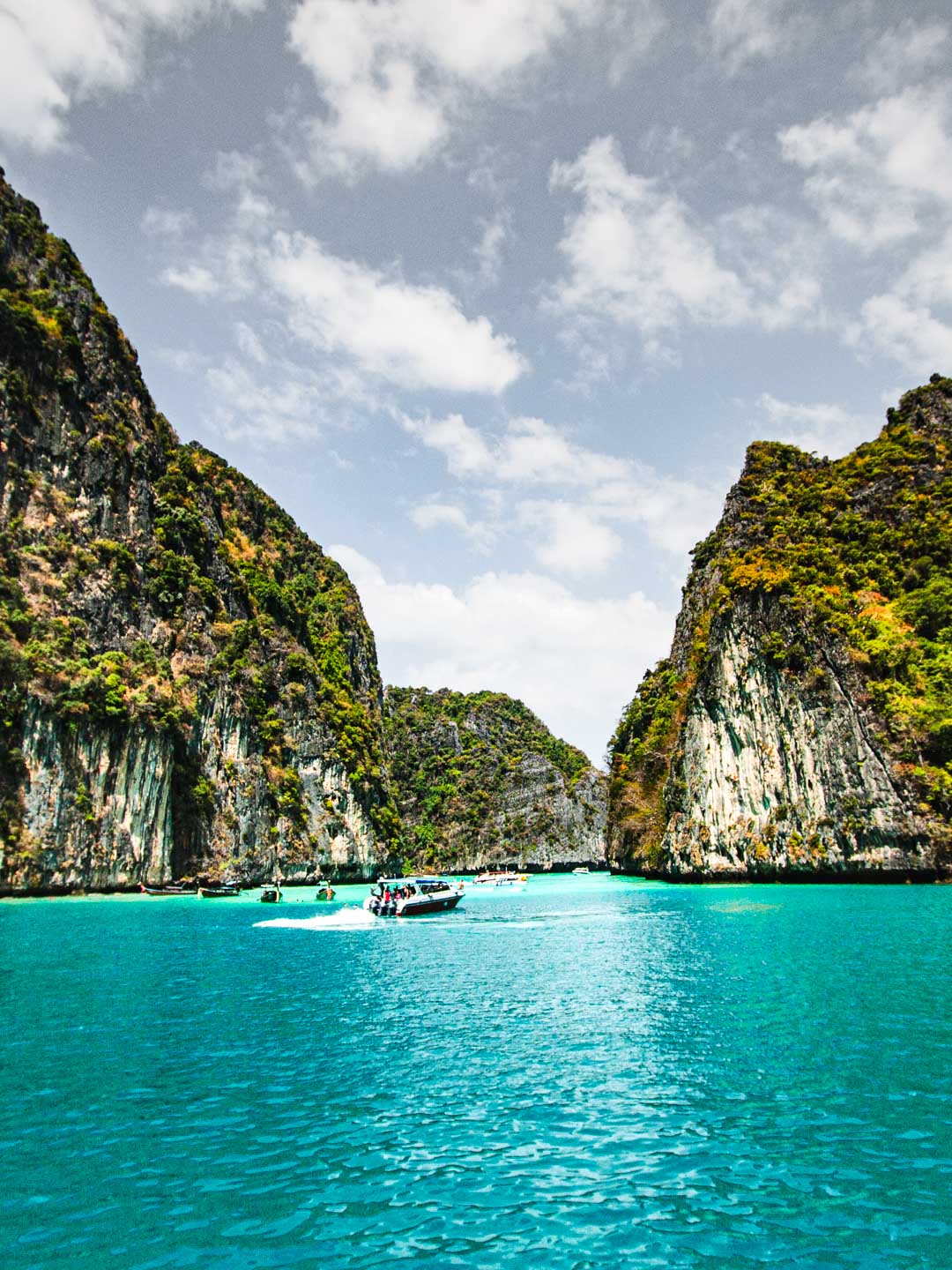
Where to Eat in Thailand
When traveling in Thailand, you can’t miss out on its incredible local cuisine, which is renowned as some of the best in the world.
Here’s a list of top recommended places to enjoy great food across the country:
- Bangkok:
- Jek Pui Curry Rice
- Moo Satay Plaengnam
- Thip Samai Restaurant
- Baan ThaTien Cafe
- Royal India
- Ayutthaya:
- Lunglek Boat Noodles
- Ban Mai Rim Nam
- Krabi:
- Ko Tung
- Koh Samui (Lamai):
- Tandoori Nights
- Kob Thai
- Sala Thai Restaurant
- Chiang Mai:
- Hanna Restaurant & Coffee Shop
- Mr Kai Restaurant

3-Week Thailand Itinerary
Thailand is so vast and diverse that seeing it all during a short vacation is nearly impossible. To make the most of your trip, planning ahead is crucial.
Here’s a suggested 3-week itinerary to explore Thailand, covering a wide range of attractions.
If you only have 2 weeks in Thailand, check out my Thailand 2-Week Itinerary Guide for the perfect alternative route.
Day 1-5: Bangkok
Day 1
- Chatuchak Market
- Wat Pho (Temple of the Reclining Buddha)
Day 2
- Grand Palace
- Wat Phra Kaew (Temple of the Emerald Buddha)
- Chakri Maha Prasat
Day 3
- Amulet Market
- Wat Arun (Temple of Dawn)
- Wat Pho (Temple of the Reclining Buddha)
Dzień 4
- Day trip to Ayutthaya: Visit Wat Ratchaburana, Wat Mahathat, Wat Phra Si Sanphet, and Wat Chaiwatthanaram
Dzień 5
- Explore Erawan National Park
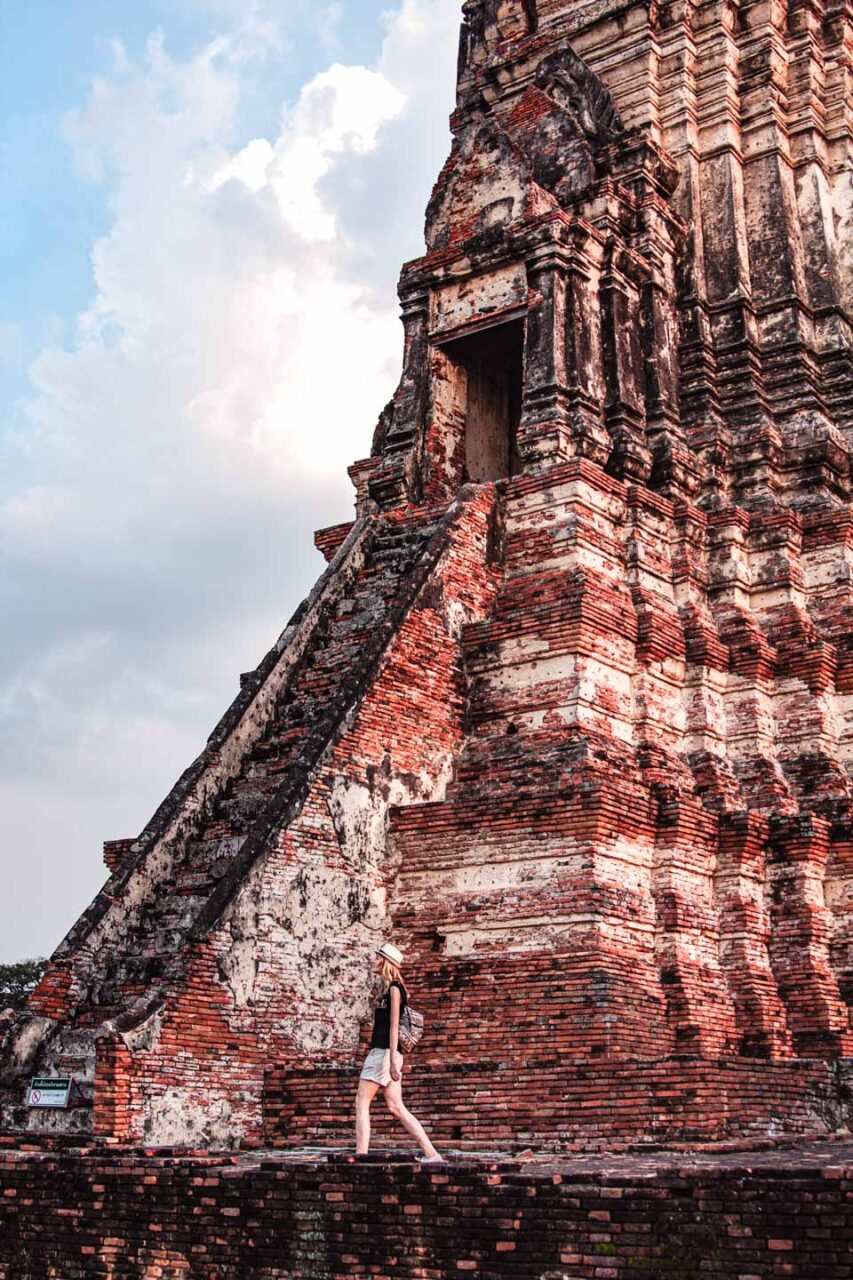
Day 6-9: Chiang Mai
Day 6
- Wat Phra Singh
- Wat Chedi Luang
- Night Bazaar
Day 7
- Elephant Sanctuaries
- Rafting Adventure
Day 8
- Cooking Class at Thai Farm Cooking School
Day 9
- Day Trip to Chiang Rai and the Golden Triangle
Want more details from my time in Chiang Mai? Head over to my Chiang Mai Travel Guide for insider recommendations!
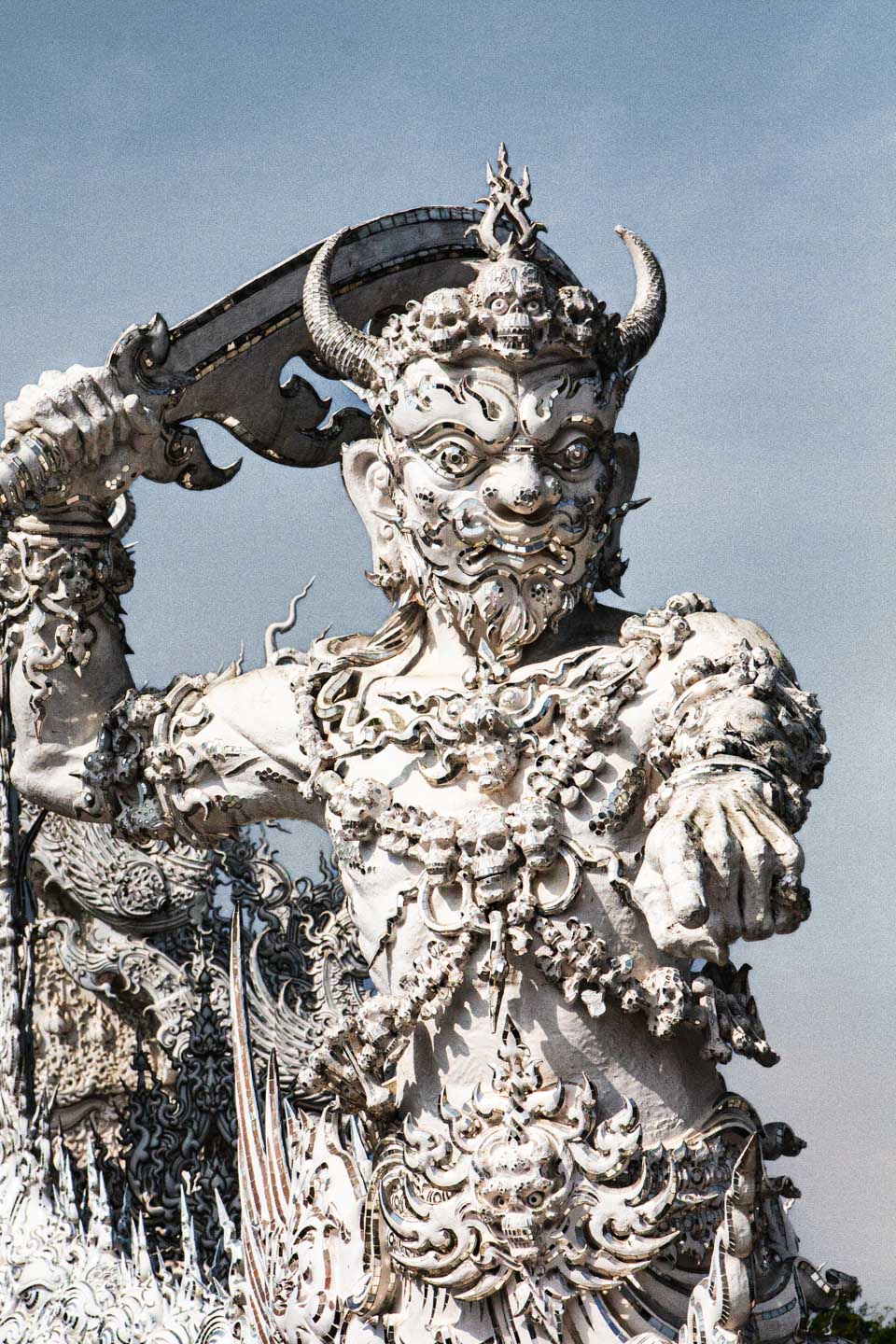
Day 10-15: Koh Samui
Day 10-11
- Explore Koh Samui’s Beaches and Waterfalls
Day 12
- Relax at Chaweng Beach
Day 13
- Visit Na Muang Waterfall
Day 14
- See the Big Buddha Temple (Wat Phra Yai)
Day 15
- Enjoy the Night Market at Fisherman’s Village
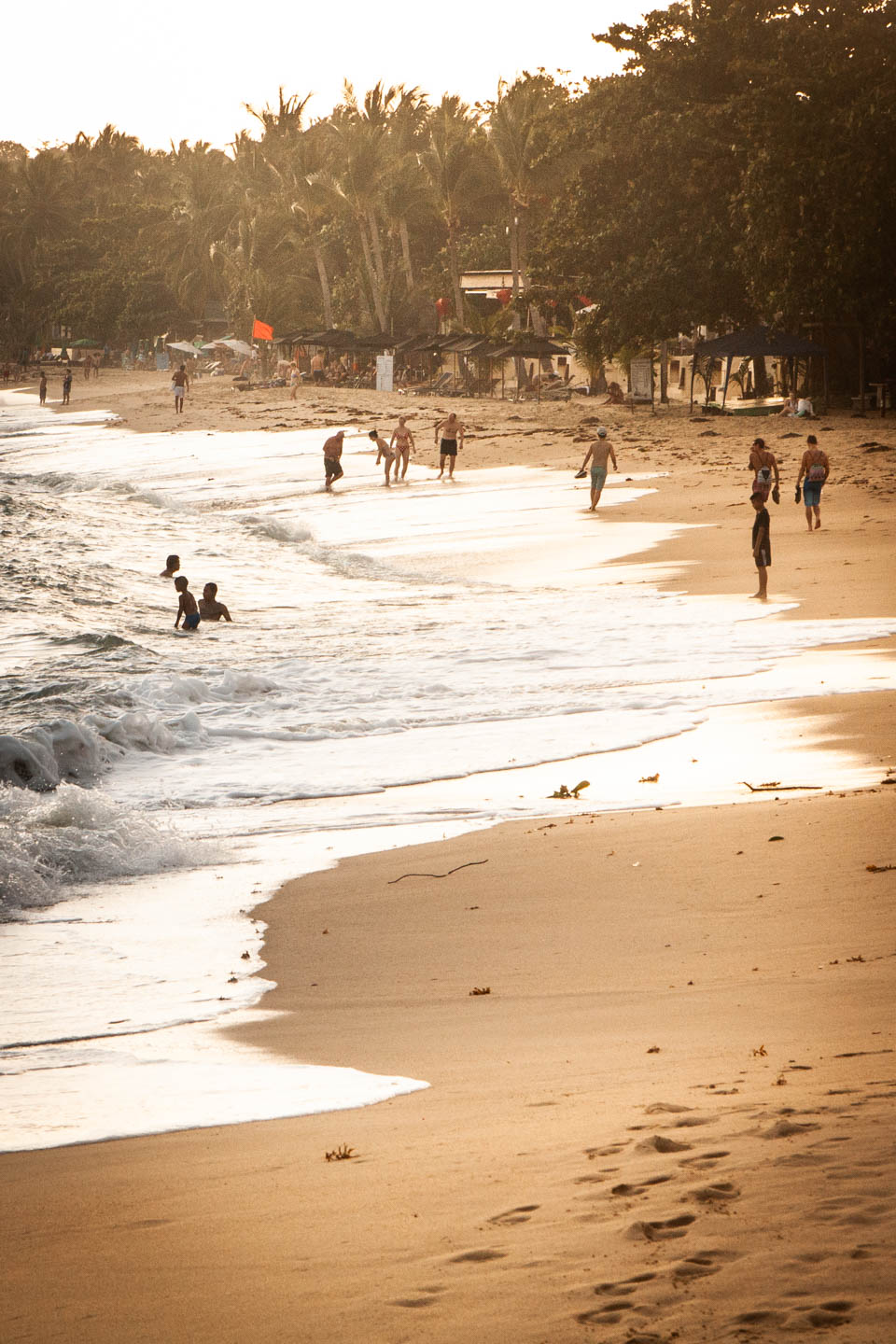
Day 16-21: Krabi
Day 16
- Arrive in Krabi and watch the sunset at Ao Nang Beach
Day 17
- Take a trip to Phang Nga Bay, including James Bond Island and Koh Panyi Village
Day 18
- Visit Bamboo Island and Phi Phi Leh
Day 19
- Explore Monkey Beach and Ton Sai Village
Day 20
- See Wat Suwan Kuha and Nopparat Thara
Day 21
- Do some last-minute shopping and relax before departure
Want to explore Krabi like a local? Don’t miss my 5-Day Krabi Itinerary packed with tips and hidden gems!
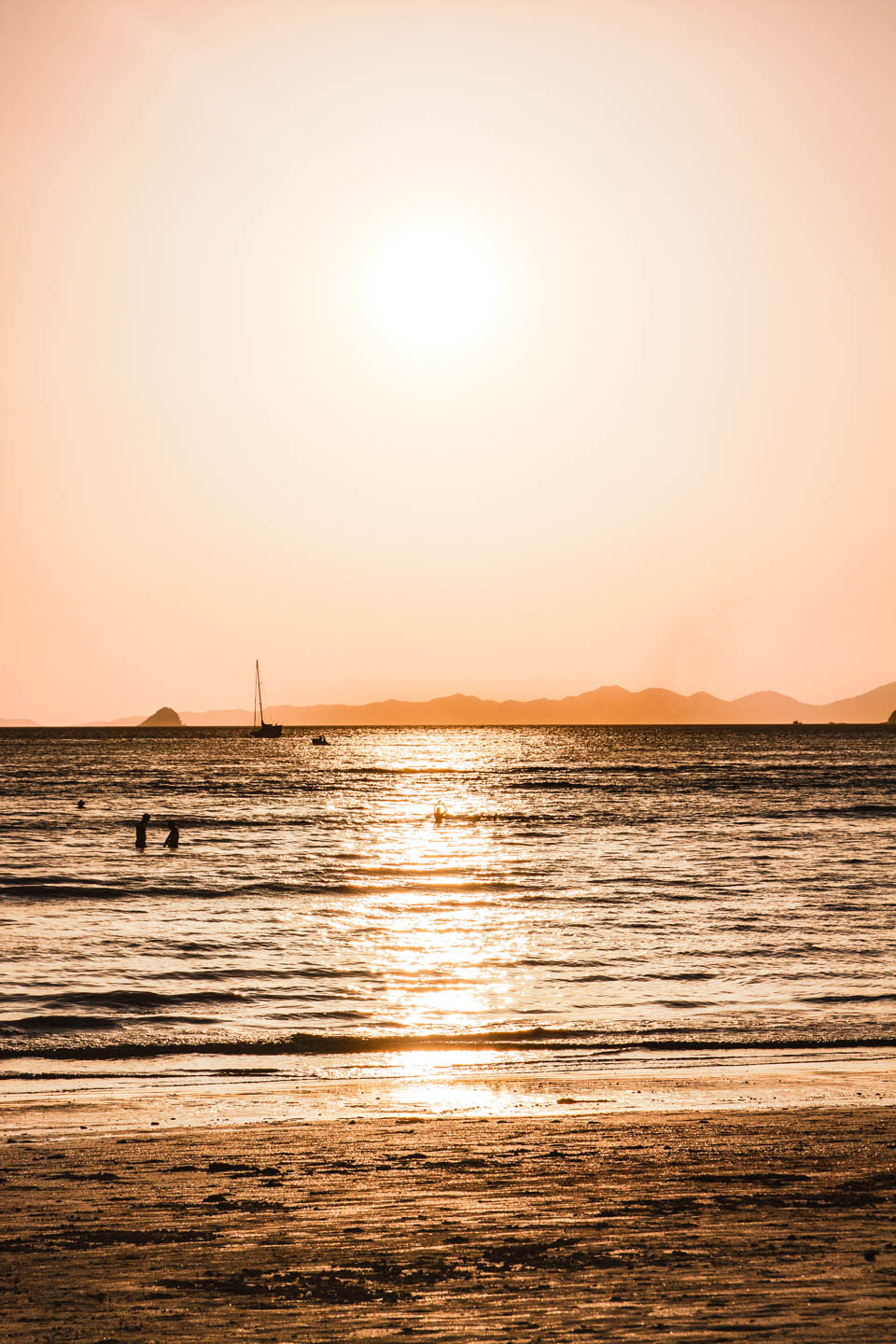
Thailand: Fun Facts
- In Thailand, stepping on a banknote or coin is illegal and considered an insult to the royal family.
- Bangkok boasts the longest city name in the world, with 169 letters in Thai.
- Thailand is unique in Southeast Asia for never having been colonized by a European power.
- Red soft drinks, such as Fanta, are often poured out as offerings to spirits to bring good fortune.
- With over 1,400 islands, some of Thailand’s islands “disappear” during high tide.
- Thailand is known for its Siamese cat breed (Wichien Maat), which was once exclusively reserved for royalty.
Ready to dive deeper into Thailand?
🏝️ Island Paradise → Koh Samui Complete Guide – Beaches, waterfalls & hidden spots I discovered
🍜 Culinary Adventure → Chiang Mai Cooking Class Review – Learn authentic Thai recipes hands-on
🏛️ Cultural Immersion → 15 Best Things to Do in Bangkok – Temples, street food & local experiences
📋 Practical Planning → 2-Week Thailand Itinerary – Perfect for shorter trips
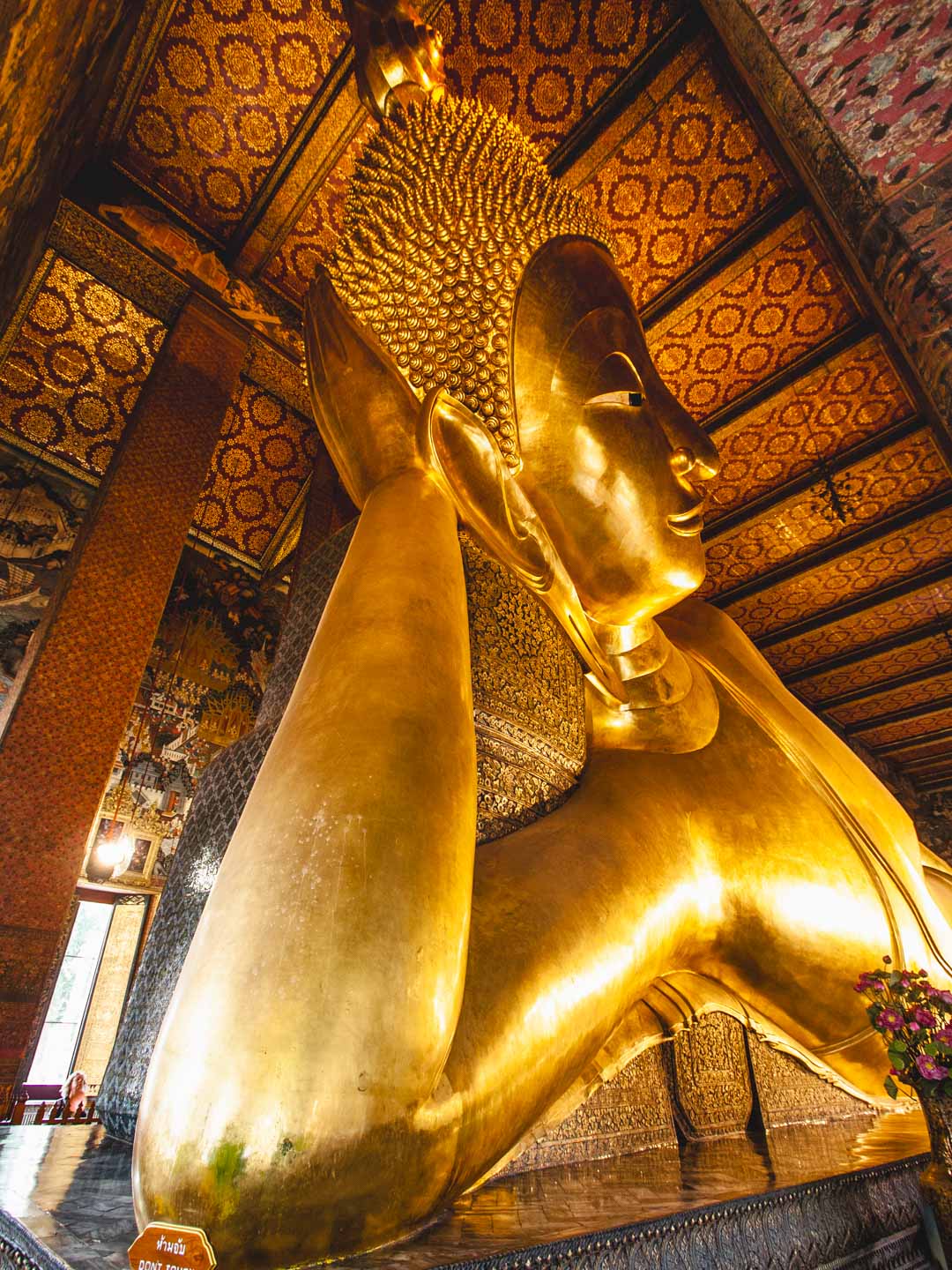
Travel Budget Calculator
Get your free Travel Budget Calculator now and plan your trip without the stress of overspending!
Thailand Travel Guide: Your Adventure Starts Here
Thailand truly is perfect for a first backpacking trip in Asia – and honestly, it’s a destination that keeps calling me back.
With its stunning beaches that stretch for miles, incredible street food that costs less than a coffee back home, and temples that will leave you speechless, this country has captured my heart completely.
But here’s what I’ve learned after many trips to Southeast Asia: the magic isn’t just in the famous tourist spots.
It’s in that moment when you’re sitting on a plastic stool, slurping pad thai from a street vendor while watching the chaos of Bangkok unfold around you.
It’s discovering a hidden beach on Koh Samui where the only sounds are waves and palm trees. It’s learning to cook authentic green curry at an authentic Thai farm in Chiang Mai.
The beauty of Thailand is that it meets you exactly where you are.
Whether you’re a nervous first-time solo traveler, a couple seeking romance, or a family wanting adventure, Thailand delivers – and it does it at prices that will make you question why you ever thought travel was expensive.
Ready to make Thailand your next adventure?
- Start with my Koh Samui Travel Guide if tropical paradise calls to you
- Dive into Bangkok Adventures for the ultimate urban experience
- Join my Cooking Class in Chiang Mai for authentic cultural immersion
- Get inspired by my 2-Week Thailand Itinerary for the perfect shorter trip
What’s your Thailand dream? Beach bliss, cultural exploration, or foodie adventures? Drop a comment below – I love hearing about your travel dreams and helping make them happen!
Share this guide with anyone planning their Thailand adventure, and don’t forget to save it for your own trip planning!
Pin it for later!
This article contains affiliate links. If you make a booking through these links, I may earn a commission, supporting this blog. Rest assured, my recommendations are based on honest assessments, and using these links doesn't affect prices for you. Thank you for your support!
